
Title: Laser composite processing technology
Chair
Prof. Li Jun Yang
Harbin Institute of Technology, China
Abstract
Biography
Lijun Yang received the Ph.D degree in mechanical engineering from Harbin Institute of Technology, China in 2007. Now he is currently a full professor in Key Laboratory of Micro-systems and Micro-structures Manufacturing, Ministry of Education. His research interests are ultrafast laser micro-nano manufacturing, laser composite manufacturing and development of optical and mechanical integration equipment. He is the fellow of Chinese Society of Micro-Nano Technology, Chinese Society for Optical Engineering and Chinese Society of Astronautics. Over the past years, Prof. Yang has presided over the National Natural Science Foundation Project of China, the National High-tech R & D Program. National Key R & D Program of China and National Science and Technology Major Project. He has won the first prize of National Defense Science and Technology Progress Award. He also won the the second prize of Science and Technology Advance and Natural Science in Heilongjiang Province in 2014, 2015 and 2017 He has been authorized over 20 patents of invention of China and published more than 100 academic papers.
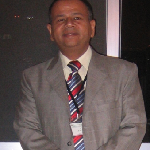
Title: Photonic crystals umbrella for Thermal desalination: Simulation study
Keynote Talk
Prof. Arafa H Aly
Beni-Suef University, Egypt
Abstract
For sustainable water desalination, there is a worldwide push towards solar thermal desalination with the objective to limit the amount of consumed energy in other desalination technologies and maximize the resulting freshwater from saline water. Here, we demonstrate a photonic crystals solar umbrella that covers the saline water surface, demanding to absorb all the incident electromagnetic wave and remit it as greater wavelengths in the range of mid-infrared (MIR) to be highly absorbed and localized close to the water surface. The temperature of the saline water with a refractive index of 1.3326 is reached to 45 °C after one hour of illumination with the incident power intensity equal 680(w/m^2). Hence, by adding one-dimensional PCs the surface temperature is reached 77 °C. Also, by adding 2D PCs to allow the vapor to flow up through the pores of the structure with the diameter of the pore equal to 500 nm, the surface temperature is reached 87 °C. Thus, the effective use of electromagnetic waves and warmth localization at the surface of saline water is accomplished by radiative coupling with the effect of 2D PCs. We design the considered structure by using COMSOL multiphysics which based on the finite element method (FEM).
Biography
Arafa H.Aly has completed his PhD at the age of 35 years from Cairo University and postdoctoral studies from Soeul national university, Chonnam national university, ICTP, AUB, and Zaragoza University. He is the chairman of Eg-MRS which is the oldest scientific society in Egypt and Middle East. He has a distinguished 25-years career in material sciences and optical and acoustical applications. He has supervised for many master's and doctoral theses organized more than 40 conferences. He has published more than 150 papers in reputed journals and has been serving as an editorial board member of repute.

Title: Efficient THz radiation generation in plasma
Keynote Talk
Prof. Niti Kant
Lovely Professional University, India
Abstract
Efficient THz radiation generation by frequency chirped pulse lasers in magnetized plasma is analysed. The beating of two laser pulses induces a ponderomotive force which drives a nonlinear current at beat frequency. This nonlinear current is responsible for THz radiation generation. The frequency chirp and magnetic field are crucial for efficient THz generation. The presence of magnetic field further provides the additional momentum to the THz photon to make the process resonant and hence, enhancement in the THz efficiency is observed. Our numerical simulations reveal that there is a significant enhancement in the THz field strength for optimized value of chirp parameter and magnetic field.
Biography
Dr. Niti Kant is a Professor at Department of Physics, Lovely Professional University, Phagwara, Punjab, India. He received Ph.D. degree in Plasma Physics from IIT Delhi in 2005. His research is focused on the areas of ultra-short intense laser interaction with plasmas and semiconductors, laser-plasma based accelerators, harmonic generations and THz radiation. He has supervised 26 PG and 7 Ph.D. students and published more than 80 research papers in various international SCI journals. He visited several countries e.g. UK, USA, Poland, South Korea, Egypt etc. and presented his research work at various international conferences/workshops. He is also a member of different renowned associations/societies e.g. OSI, PSSI, ISCA, IET, UKRI etc. Dr. Kant has been receiving Research Excellence and Research Appreciation Awards from Lovely Professional University since 2014 consecutively. He was also awarded with Best Researcher Award for 2020 by InSc and Science Father agencies.

Title: Interactions between light and moving particles in a fluid: liquid metamaterials and active matter
Keynote Talk
Prof. Alain Celzard
Université de Lorraine, France
Abstract
In this talk, we report some recent work on different effects produced by the interaction between particles suspended in a fluid and electromagnetic waves.
For example, we experimentally demonstrate the controllable transmission of an electromagnetic wave through a plasmonic liquid metacrystal in the optical frequency band. We also propose the design of fully dielectric isotropic micro- or nanoparticles which, when used as structural elements of a liquid metamaterial, can simultaneously provide negative effective electrical permittivity and negative magnetic permeability.
We then consider the scattering of a plane electromagnetic wave on a cylindrically inhomogeneous distribution of meta-atoms in a liquid metamaterial. The inhomogeneity of the distribution that appears following the application of an electric potential means that the effective permittivity can become negative in a certain region of space, giving rise to effects such as resonant absorption, resonant scattering, which can be controlled in real time by modifying the applied electric potential and thus reorganising the liquid.
Finally, if time permits, we will describe particles proposed as new active matter agents, self-propelled by magnetohydrodynamic acceleration of the surrounding fluid when resonantly excited by an electromagnetic wave.
Biography
Alain Celzard graduated in chemical physics in 1992 and received his PhD in materials science in 1995 in Nancy (France). Since 2005 he is full professor at ENSTIB engineering school (Epinal). In 2010 he was appointed Junior member of the Institut Universitaire de France. His scientific interests deal with disordered, porous and related materials, ranging from composites and nanoporous adsorbents to macroporous solids and disordered materials for catalytic, environmental, energy, or electromagnetic applications.
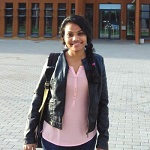
Title: Effect of Yb3+Ion Clustering on the enhancment of Upconversion Fluorescence
Invited Talk
Dr. Sangeetha Balabhadra
University of Canterbury, New Zealand
Abstract
Lanthanide ion (Ln3+) doped upconverting nanoparticles arecapable of converting low-energynear-infrared (NIR) photons intohigh-energy visible photons. This upconversion fluorescencehastremendous importance for a broad spectrum of applications inbio-imaging, drug delivery, theranostics, photovoltaics, securityand several applications in nanomedicine. Despitepromising applications in many technologically relevant areas, thecomparatively low upconversion fluorescence yield typically obtained,limits practical application of such materials. Nanoparticlesof varying size, dopant concentration, surface modifications,different host, and core/shell nanostructures have been explored toenhance the upconversion fluorescence quantum yield.However,investigations which relate thesevariables to the absorption and excitation spectraare not found in the literature. It is crucial tounderstand the absorption and excitation dynamics of the ofYb3+ions inupconverting nanoparticles to determine the optimumpump wavelength and to gain insight into the energy transferprocesses, which essentially govern the optical properties oflanthanide ion doped nanoparticles.This work gives an indepth viewof the pathways to improve the upconversion fluorescence in fluoride based nanoparticles.
Biography
Sangeetha Balabhadra has completed her PhD from the Department of Physics, University of Aveiro, Portugal. She has been working as a postdoctoral researcher in University of Canterbury, New Zealand since 2018. She has published around 15 papers in reputed journals in the field of luminescence materials and it's applications

Title: Optical metamaterials and their applications
Invited Talk
Prof. Weiping Wu
Chinese Academy of Sciences, China
Abstract
Metamaterials are artificial structures with specific electromagnetic properties. The physics and many concepts of metamaterials have been demonstrated in the microwave and terahertz range. By reducing the size of the periodic structures, e.g. using top down, or ultra-thin film, or two-dimensional (2D) materials, it is possible to create novel optical metamaterials. Depend on the designs, the material used and the refractive index of the media, the optical metamaterial show response in the visible or near infrared range. The wavelength, the Q-factor of the of the peaks can be tuned. Most optical metamaterial are based on metallic structures, it is also possible to use dielectric materials, semiconductor, semimetals to fabricate metamaterials. The emerging optical metamaterials can be used as sensors, light management, optical components, as well as ideal solar absorbers for solar cells and solar energy powered steam generation devices.
Biography
Dr Weiping Wu is a Professor at Shanghai Institute of Optics and Fine Mechanics, Chinese Academy of Sciences. He graduated with a bachelor’s degree in Material Science and Engineering at Shanghai Jiao Tong University in 2004. He received his Ph.D. in chemistry from the Institute of Chemistry, Chinese Academy of Sciences in 2010. From 2010 to 2013 he worked as a Research Associate at the University of Cambridge. He worked on optical metamaterials at the Optoelectronics Research Centre (ORC), the University of Southampton as a Research Fellow from 2013 to 2015. He took the George Daniels Lectureship at University of London in 2015 and worked in the UK till 2020. He has published more than 50 papers with total citations over 4000 and an h-index of 32. He was the chairman of Chinese UK Group of Society of Chemical Industry from 2015-2020. He is a member of the Royal Society of Chemistry (RSC) since 2012 and a Senior Member of OSA (The Optical Society) since 2020. He is one of the young observers of the International Union of Pure and Applied Chemistry (IUPAC) 47th Congress, 50th General Assembly and Centenary, Paris in 2019.
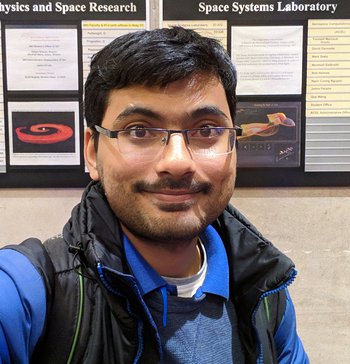
Title: Astronomical spectrographs on a chip - Getting ready for the next-generation telescopes
Invited Talk
Dr. Pradip Gatkine
California Institute of Technology, USA
Abstract
Astrophotonics is the application of versatile photonic technologies to channel, manipulate, and disperse guided light from one or more telescopes to achieve scientific objectives in astronomy in an efficient and cost-effective way. The photonic platform of guided light in fibers and waveguides has opened the doors to next-generation instrumentation for both ground- and space-based telescopes in optical and near/mid-IR bands, particularly for the large and extremely large telescopes (ELTs). Utilizing photonic advantage for astronomical spectroscopy is a promising approach to miniaturize the next generation of spectrometers for large telescopes and space-based telescopes. In this talk, I will discuss some of the recent results from our efforts to design and fabricate high-throughput on-chip spectrometers based on Arrayed Waveguide Gratings (AWG). These devices are ideally suited for capturing the AO-corrected light and enabling new and exciting science such as large-scale near-IR galaxy surveys to map the cosmic filaments or characterizing exoplanet atmospheres. I will also discuss specific approaches to make this technology science-ready for the ELT era.
Biography
Pradip Gatkine is David & Ellen Lee prize postdoctoral fellow at Caltech. He received his PhD in Astronomy from the University of Maryland in July 2020. His photonic research includes the development of next-generation astrophotonic instrumentation for large telescopes. He is currently developing moderate resolution astrophotonic arrayed waveguide grating (AWG) spectrographs and OH-suppressing notch filters for astronomical telescopes. He led an Astro-2020 white paper on astrophotonics in the next decade. On the astrophysics side, he is interested in studying the metal enrichment history and mechanisms, especially using gamma-ray bursts as probes. He is currently studying the properties of the circumgalactic medium (CGM) at high redshifts (z > 2) and the galaxy-CGM relationship. He will be starting as a NASA Hubble Fellow at Caltech in September 2021.

Title: Dr. Sib Krishna Ghoshal
Invited Talk
Dr. Sib Krishna Ghoshal
University Technology Malaysia, Malaysia
Abstract
Diverse bio-compatible nanostructures with customized optical and physiochemical characteristics became desirable for biomedicine applications. Lately, the contagious diseases due to widespread fatal pathogens, microbes, bacteria and viruses including the latest coronavirus together with ever-increasing diabetes, cardiac arrests and cancer ailments have caused severe global distress. To overcome these problems, different surface functionalized organic-inorganic nanomaterials have intensively been studied. In this regard, metal nanoparticles (MNPs)-integrated organic shell structures (SSs) became potential. Nanoparticles of Cu, Ag, Au, SiO2, TiO2 and ZnO due to their excellent chemical durability, environmental affability, strong surface reactivity, bio-compatibility, non-toxicity and low-cost are materialized as efficient nanomedicine agents. Repeated studies revealed that the overall attributes of these functional nanostructures strongly depend on the growth methods. However, the existing chemical and physical methods (viz. sputtering, chemical etching, mechanical milling, sol-gel, vapor deposition, spray pyrolysis,atomic or molecular condensation, nanoemulsion and reprecipitation) that are used to produce these MNPs-functionalized SSs have various limitations like the requirement of toxic chemicals, precursors, complicated processing conditions, poor scalability, undesirable effects, etc. Furthermore, achieving tinier nanostructures (size below 100 nm) with tailored properties is the main limitation of these growth techniques. These shortcomings can be overcome using the simple, cost-effective and eco-friendly nanosecond pulse laser ablation in liquid (PLAL) technique wherein the pure colloidal nanostructures at large-scale with tunable traits (structures, morphology, size, phase, bioactivity and so on) can be obtained by optimizing various laser parameters (energy, wavelength, repetition rate, pulse width, fluence, and liquid media), indicating their practical applications feasibility in pharmaceuticals and biomedicines. Based on these facts, we prepared different types of organic-inorganic nanohybrids using the versatile PLAL approach and characterized them via diverse analytical tools. Truly, the PLAL grown nontoxic and adaptable colloidal nanocomposites owing to their enhanced bioactivity and fluorescence properties were shown to destroy a wide spectrum of microorganisms compared to conventional synthetic drugs. To this end, this webinar intends to demonstrate the nanobiomedicine potency of the studied inorganic-organic nanohybrids in terms of their virucidal, bactericidal, antidiabetic, anticancer, antioxidant and antiaging traits. The proposed nanohybrids were established to be beneficial for future nanobiomedicine applications and food processing. The research and development in this area, still being in the infancy phase, will require dedicated efforts to get an in-depth understanding concerning the knowhow of these nanohybrids for the forthcoming drug formulations.
Biography
Dr. Sib Krishna Ghoshal is currently Associate Professor of Physics at the Faculty of Science, University Technology Malaysiasince 2010.From2004-2010worked in the Physics Department and Materials Science Program of Addis Ababa University, Ethiopia, Africa as Associate Professor in the United Nations Development Program for the expansion of Graduate Studies. He served assenior lecturer and promoted asreader at Guru Jambheshwar University of Science and Technology, India during 1998-2006. He received PhD degree in Condensed Matter & Statistical Physicsin 1996 from School Physical Sciences, Jawaharlal Nehru University (Delhi, India). Carried out two post-doctoral researches one in Martin Fisher School of Physics (Brandeis University, USA) during 1999-2000 and the other in a joint research project of Indian Institute of Technology (Delhi) & Oxford University (UK) in 1996-1998. Supervised few Master Theseswith Nicola Marzari (MIT, USA)and worked with Sir Roger Elliotte (Oxford, UK), K. P. Jain (IITD), B. Chakraborty(Brandeis, USA)& S. Dattagupta (SPS, JNU). He receivedMasterDegreein Physics in 1989 from Premier Presidency University, CalcuttaandBSc (Physics Honors)degree in 1986 from Calcutta University.Besides having a long innings-spanning almost three decades in teaching Physics/Materials Sciences at various levels and advising an appreciable number of doctoral and masters theses, he possesses a remarkable research profile too. He published over 600research articles (339in Journals with total impact factor of 675), 15 book chapters, and 7books.His Google scholar h-index is 38, i10-index is 111and citations are 4840. So far, he received 55research grants, supervised 25PhD, 80MSc, and 65undergraduate thesesstudents. Heis listed as top 2% scientistsin physics worldwide in 2020.His recent research interests are in Advanced Optical Materials, Statistical Condensed Matter Physics, Nanomaterials Synthesesand Applicationsincluding NanoBioMedicice, Laser Physics, Simulation and Modeling as well as Nanoscience. One of his major concerns other than research pursuits is the social impact of science and technology on environment, marginalized societal groups deprived of higher education, and the imbalances thereupon in the distribution of its fruits and adverse impacts on these stakeholders.
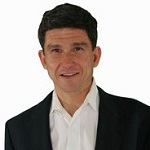
Title: The Importance of High Power in Laser Photobiomodulation, A Systematic Review and Meta-analysis
Invited Talk
Dr. William Todd Penberthy
CME Scribe, USA and Aspen Laser, USA
Abstract
Photobiomodulation therapy (PBMT) has entered mainstream acceptance with recognition by payers for the treatment of cancer patients for oral mucositis using low-level light therapies (LLLT), but progress with high-intensity laser therapy (HILT) has yet to achieve such status in part due to hesitation to use FDA class IV devices that are typically associated with surgical purposes and also due to negative clinical trial outcomes from low powered PBMT treating tissue pathologies too deep to receive low powered light. Clinical trials have proven that high-powered lasers can produce positive outcomes often when LLLT cannot. This study aimed to evaluate the scope of the range of clinically proven high-intensity laser indications responding with a favorable outcome towards better understanding of optimal laser setting parameters and treatment plans.The 25 independent studies meeting inclusion criteria focused on arthropathies, spine, shoulder/elbow, wound, chronic sinusitis, temporomandibular joint dysfunction, endometriosis, osteoporosis with evaluation of pain, range of motion, mobility, quality of life, and anatomy. Pain was consistently reduced with statistical significance (p<0.05) in 100% of studies focused on arthropathies (n=6) with sustained benefits detectable after cessation of treatment and 82% of all study pain assessments (n=22). Improvements in back/spine-related pathologies, wound healing, bone mineral density, and knee cartilage thickness were demonstrated. Largest effect sizes observed were observed for pain reduction in arthropathies (average Cohen's d effect size = 2.53), chronic sinusitis, cervical spondylosis, and adhesive capsulitis. More studies are needed for identification of responsive indications with establishment of the first future guideline-directed payer recognized high-powered PBMT.
This scientific report was made possible by collaboration and contributions of the Aspen Laser Company (USA) and Charles Vorwaller, President (https://www.aspenlaser.com/). W. Todd Penberthy is a Scientific Advisor for Aspen Lasers Company.
Biography
W. “Todd” Penberthy, obtained his PhD in biochemistry at the University of Tennessee, Memphis focused on transcription factors before training at Tufts New England Medical Center and UCLA focused on developmental biology of hematopoiesis and neurogenesis. As a faculty at the University of Cincinnati he led drug discovery collaborations using the zebrafish animal model of human diseases for small molecule discovery in collaboration with fortune 500 pharmaceutical company. Since, 2012 he has focused on providing continuing medical education (www.CMESCRIBE.com) writing for physician education/board certification while also providing biomedical scientific research and writing services.
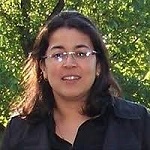
Title: Optoelectronic, mechanical, vibrational properties of triple perovskites Ba2K2Te2O9 and Ba2KNaTe2O9: Density functional theory
Invited Talk
Prof. Souraya Goumri-Said
Alfaisal University, Saudi Arabia
Abstract
We carried density functional theoretical (DFT) calculations to explore the electronic, optical, mechanical and vibrational properties of triple ordered perovskites Ba2K2Te2O9 and Ba2KNaTe2O9 by employing the Tran-Blaha modified Becke-Johnson as state-of-the-art exchange-correlation potential. The calculated electronic band structures show direct band gap showing a semiconductor nature. Total and partial densities of states peaks were analyzed in light of effective contributions of various electronic states. The significant optical parameters, including the components of dielectric constant, the energy loss function, the absorption coefficient, the reflectivity spectra, the refractive index and the extinction coefficient, were computed and discussed in details for radiation up to 12 eV. In order to check the mechanical and dynamic stabilities, we calculated the elastic constants and also phonons. Our present study might be considered as first theoretical quantitative calculations of the optical and electronic behavior in the cubic phase of triple perovskite materials based on Telluride.
Biography
Born in Toulouse (France), Souraya Goumri-Said is associate professor of Physics at Alfaisal University (Riyadh, KSA). She received her PhD degree from the Bourgogne University in Dijon (France) on 2004. Souraya spent one year in Val de Marne University as temporary assistant professor then joined the condensed matter group in physics department of technical university of Kaisterslautern in Germany on 2005. From 2006 to 2010, she was awarded different research fellows in France and Belgium as postdoctoral and assistant professor at Maine University (Le Mans, France) from 2006 to 2008. Then she worked as researcher at Namur University (Belgium) from 2008 to 2010. Souraya worked and managed an industrial project within Arcelor Mital research and development department in collaboration with three universities in Wallonie region in Belgium. From July 2010, she was employed at KAUST University (Saudi Arabia) before joining Georgia Tech where she is working as research scientist within Prof. Jean-Luc Bredas group at the School of Chemistry and Biochemistry and Center for Organic Photonics and Electronics. Her main area of research is density functional theory applied to material science and modeling the physical properties of functionalized materials such as perovskites, ceramics, carbides, nitrides, and materials for storage hydrogen. She also specializes in modeling optical, photonic devices and nanostructures for photovoltaic applications. Souraya is editor of open Physics (former the central European journal of physics,) within Dedegruyter edition since 2008. She edited her first book on 2006 about ab-initio methods applied to physical properties of semiconductors nitrides and perovskites. Souraya is author and co-author of more than 143 papers, 6 chapters and books with h-index=28. She joined the advisory Editorial Board of computational condensed matter journal at Elsevier.
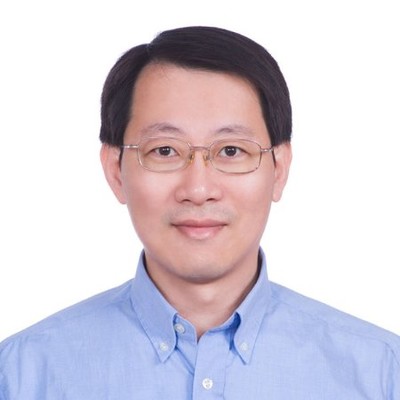
Title: High-Speed Multi-format Digital Encoding of Si p-n Junction Waveguide Modulator at C-band
Keynote Talk
Prof. Gong-Ru Lin
National Taiwan University, Taiwan
Abstract
Single-arm-driven silicon (Si) Mach-Zehnder modulator (MZM) operated at C-band (λ=1550 nm) for non-return-to-zero on-off-keying (NRZ-OOK) transmission beyond 50 Gbit/s over 10-km single-mode fiber (SMF) and dispersion-shift fiber (DSF) is demonstrated for IEEE 802.3bs standardized 400GBASE-FR8/LR8 operation. The single-arm-driven Si MZM supports error-freeNRZ-OOK transmission at the highest data rates of 53-Gbit/sunder back-to-back (BtB), 53-Gbit/s 2-km SMF and 50 Gbit/s over optical 10-km DSF with receiving power penalties of respectively 0.2 and 0.25 dB after 2-km SMF and 10-km DSF propagation. With pre-emphasized four-level pulse amplitude modulation (PAM-4) data encoding at 50 GBaud (100 Gbit/s) for the IEEE 802.3bs standardized FR-4 operation, the power fadinginducedby channel dispersion can be digitally compensated to enable 50-GBaud for BtB, 50 GBaud for 2-km SMF, and 26 GBaud for 10-km DSF under KP4-FEC criterionfor 100/100/52-Gbit/s data transmission with qualified bit error ratios (BERs) of 1.5×10-4/2×10-4/1.4×10-4. The single-arm driven scheme which takes advantage of less circuit complexity than traditional push-pull-typed dual-arm-driven operationalso certifies the 50-GBaud PAM-4 data capability over 2-km SMF link for inter-data-center applications.To improve the finite bandwidth usage efficiency for data encoding, theadvanced data format of M-level quadrature amplitude modulation orthogonal frequency-division multiplexing (M-QAM OFDM) with allowable bit rate beyond 135/140Gbps is demonstrated under single-/dual-arm encoding conditions. Thespecificadjustmenton bias and wavelengthis represented for the single-/dual-arm-driven asymmetric Si MZM to optimize the 4/16/32-QAM OFDM data formattransmission performance with pros and cons discussed for all data formats.
Biography
Gong-Ru Lin is the full professor with the Graduate Institute of Photonics and Optoelectronics and the Department of Electrical Engineering, and also the Associate Dean with College of Electrical Engineering and Computer Science at National Taiwan University. He is honored as the Y. Z. Hsu Science Chair Professor and the Lifetime Distinguished Professor of the NTU. He is the Fellows of IEEE, OSA, SPIE, IET, IOP, the Distinguished Research Fellow of MOST Taiwan, and the 13th President of Taiwan Photonics Society.

Title: Plano-Convex Microsphere Lens functioning for nano-fabrication and nano-imaging
Invited Talk
Dr. Bing Yan
Bangor University, Uk
Abstract
One of the great challenges in optical lens design is to break the diffraction limit. Recently, using dielectric microsphere as a nearfield lens for sub-diffraction fabrication and imaging has attracted great interests. The optical phenomenon knowns as “photonic nanojet” was shown to contribute to light focusing to break the diffraction limit. Although literatures revealed the capability of sub-diffraction fabrication and imaging for microsphere-based superlens, there have been few reports that a microsphere lens design can feature both functions concurrently. This work proposes and demonstrates a high-performance all-dielectric compound lens, formed by integrating a conventional Plano-Convex lens with a high-index Microsphere lens. We call such new lens the Plano-Convex-Microsphere (PCM) lens, which is developed for far-field super-resolution applications. The compound PCM lens is highly versatile and can be simply adapted into an existing optical system to realize super-resolution function. In this work, the super-resolution features of the PCM lens was implemented in two modules: laser induced nanofabrication and white light nano-imaging. The results imply that this new design has raised the usability of microsphere-based superlens technique to a new level. This is a low-cost, simple but efficient method to realize super-resolution fabrication and investigation concurrently, also applications can be naturally extended to other super-resolution applications including sensing, trapping and more.
Biography
Bing Yan undertook his PhD at the School of Computer Science and Electronic Engineering, Bangor University in all-dielectric superlens and the corresponding applications. He had worked as the post-doc research assistant for the Welsh-European Funding SPARC II project at Bangor University and Suzhou Institute of Biomedical Engineering and Technology, Chinese Academy of Science from 2017 to 2019. At present, he is a research associate at Bangor CPE centre to support the collaborative development of optoelectronic and photonic devices with industries. His research interests include dieletric microlens super-resolution imaging, laser material processing, micro/nano-fabrication, fiber optical tweezer.

Title: Watching Electrons Move: Understanding Solar Energy Conversation using Ultrafast XUV Spectroscopy
Invited Talk
Dr. Somnath Biswas
Princeton University, USA
Abstract
Solar energy has a great potential to meet the growing global energy demand. However, at present sunlight contributes less than 1% to the total energy economy. To enable conversion and storage of solar energy for practical applications, several scientific challenges remain to be addressed. Absorption of sunlight produces energetic negative and positive charges, which can be utilized to generate electrical or chemical energy. However, in many materials these charges recombine within femtoseconds of formation and limits the efficiency of a material. Therefore, if the energy conversion process is not well controlled at the very early times following absorption of sunlight, these charges will recombine, and the energy is lost before they can be used. With the goal of better understanding and controlling charge motion in energy conversion materials, my work focuses on watching electrons move in solar materials. Towards this goal I have developed a lab based XUV spectrometer which can track motion of charges on thefemtosecond time scale. The mechanistic understanding obtained in these experiments promises to inform the design parameters for engineering materials with better energy conversion efficiency.
Biography
Somnath Biswas received his BS from Ramakrishna Mission Vidyamandira (Belur, India) in 2013. He obtained his MS from Indian Institute of Technology (Kanpur, India) in 2015. He received his Ph.D. from The Ohio State University under the supervision of Professor L. Robert Baker in 2020. Currently, he is a postdoctoral researcher at Princeton University with Professor Gregory D. Scholes. His research interests are in ultrafast spectroscopy, electron{phonon interaction, surface electronic structure, and quantum information science. He is a recipient of the Presidential Fellowship award from The Ohio State University and the Academic Excellence in Research award from the Federation of Indian Associations, USA.

Title: Linear Density of ZnO Zinc Rocsalt Structure under Isothermal and Isobaric Ensembles a MD Computation
Invited Talk
Dr. Yahia Chergui
Cardiff University, UK
Abstract
In this work we used Parallal Molecular Dynamics and DL_POLY_4 to study the effect of different pressures and temperatures to analyze linear density of ZnO zinc rocksalt structure. Our system is formed from 5832 atoms of ZnO(2916 atoms of Zn+2 and 2916 atoms of O-2), the interatomic interactions are modeled by Coulomb-Buckingham Potential for short and long-range, the range of temperature is 300-3000K and for pressure is 0-100GPa. Although no more data under previous conditions our results are in the vicinity of available experimental and theoretical information. This work is very important in nanoscale of time and space and in different sectors of industry.
Biography
Yahia CHERGUI is an assistant Professor in Electrical & Electronics Engineering Institute, Boumerdes Algeria. He has completed his PhD from Badji Mokhtar University in Annaba, Algeria. He did all his PhD work in Cardiff University in UK. His research field is Physics(condensed matter, and soft matter simulation by molecular dynamics). He has many published articles and international conferences. He has been serving as a referee with condensed matter journal (IOP), Energy journal (Elsevier), and American Journal of Modern Physics
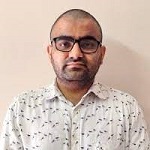
Title: Integrated Phoxonic devices for ultra-low loss sensing: a comprehensive review
Invited Talk
Mr. Anurag Sharma
Chandigarh University, India
Abstract
Phoxonics has recently emerged as the potential candidate for ultra-low-loss integrated optics, and most on-chip sensor systems today are making a progress to use this technology more efficiently. Derived from the superset of nonlinear optomechanics, researchers have gained enormous attention in the field of phoxonic-based sensing due to its inherent advantages, such as flexible dispersion engineering, tuneable refractive index within both isotropic as well as anisotropic media. This technology is popularly used in measurements of various physical parameters required for detection of gravitational waves and similar applications in the field of astronomy and remote sensing applications. Nowadays, strong emphasis is given to contactless, multispectral and low-loss sensors, which can be achieved with the phoxonic devices. Depending on the type of application, Phoxonic devices can be manipulated in terms of geometry and material having strong dispersion relations over a wide range of electromagnetic spectra. Basic fundamentals of phoxonic devices and recent progress of phoxonic-based sensors used in various sensing applications have been reviewed.
Biography
Anurag Sharma has been working as Assistant Professor in the ECE Department at Chandigarh University and is pursuing his PhD from Punjab Engineering College (Deemed to be University), Chandigarh. He received his BE degree in electronics and communication engineering from H.P.U Shimla, in 2013 and her M.E(Hons.) degree in electronics and communication engineering from Chandigarh University, Punjab, in 2016. His area of research includes Nanophotonic Sesning, Integrated Layout Design and Computational Modelling. He has contributed in a few scientific journals.
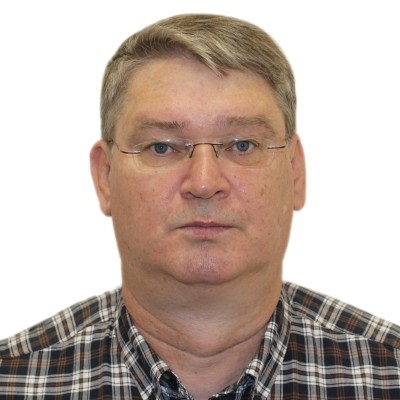
Title: Towards integrated atomo-photonic waveguide circuits for inertial sensing and quantum computing
Invited Talk
Dr. Yuri Ovchinnikov
National Physical Laboratory, UK
Abstract
Integrated photonic circuits based on suspended photonic rib waveguides, which can be used for coherent trapping, guiding and splitting of ultra-cold neutral atoms in two-colour evanescent light fields near their surface, are described. Configurations of quantum inertial sensors based on such integrated atomo-photonic waveguides, which are simultaneously guiding photons and atoms along the same passes, are presented. Application of all-optical atom chips for quantum memory is discussed. Theoretical and technological challenges, to be overcame on the way to realisation of such a novel platform for quantum technologies, are discussed. Finally, the first results on manufacturing of suspended optical rib waveguides are presented.
Biography
Yuri Ovchinnikov has graduated the Moscow Institute of Physics and Technology in 1986 and after that has joined the Institute of Spectroscopy of RAS (Troitsk, Russia), where in 1993 he has acquired PhD degree for the investigation of induced light forces on atoms. From 1995 until 1997 he was a Humboldt Fellow at the Max-Planck-Institute fürKernphysik (Heidelberg, Germany) working on light forces and traps for neutral atoms. Between 1998 and 2000 he was working as a Guest Researcher at the National Institute of Standards and Technology (Gaithersburg, USA) on investigation of the interaction of the Bose-Einstein condensate (BEC) with light and its applications to atom optics and interferometry. From 2000 until 2003 he stayed at the University of Stuttgart (Germany), where he was leading the Rb BEC project and in parallel was working on a novel multimode optical interferometer. In 2002 he was awarded the Friedrich Wilhelm Bessel Research Award for his international input in development of atom optics and invention of a new type of light interferometer by the Alexander von Humboldt Foundation. Since 2003 he is working at NPL (UK) on atomic clocks and atom interferometry. Since 2011 he is an Honorary Professor of the University College London.The main scientific interests of Yuri are related to laser cooling and trapping of atoms, atom optics, Bose-Einstein-Condensation of diluted neutral atoms and light optics.

Title: Graphene quantum dot sensitizes GaN nanotower/ZnO nanorods heterostructure based optoelectronic devices
Invited Talk
Prof. Govind Gupta
CSIR-National Physical Laboratory, India
Abstract
Heterostructure based devices has shown great potential in optoelectronic field. Heterostructure optoelectronic devices have been fabricated with unique tapper ended nanotowers GaN (GaN-NT) and ZnO nanorods (ZnO-NRs) which exhibit higher photocurrent generation and significantly enhanced responsiveness towards UV illumination. The fabricated device display substantial low dark current and fast time-correlated transient response and very high photo responsivity in self-powered mode of operation. Further, chemically synthesized novel Graphene quantum dots (GQDs) has been utilized as sensitizer and GQDs sensitized ZnO-NRs/GaN-NTs heterostructure-based UV-PDs is also realized. The fabricated devices display remarkable enhancement in the performance parameters. The fabricated device demonstrates an excellent responsivity of 3200 A/W along with a very high external quantum efficiency of 1.2 × 106%, superior switching speed, and signal detection capability as low as ∼50 fW. The study also provides a new perspective toward energy-efficient opto-electrical device fabrication.
Biography
Dr. Govind Gupta is Senior Principal Scientist & Head, Sensor Devices & Metrology Group, CSIR-NPL, New Delhi, India and Professor, Academy for Scientific & Industrial Research (AcSIR). His core area of expertise is the of growth of III-Nitrides, metal oxide and layered 2-dimensional materials, fabrication of smart optical & gas sensors, surface & interface Physics, etc.. He has published ~250 research articles in SCI journals and supervised many Ph.D. theses. He is an Associate Academician of Asia Pacific Academy of Materials and received numerous awards & fellowships including MRSI medal, Young Scientist Medal-National Academy of Sciences, India, BOYSCAST fellowship, etc.
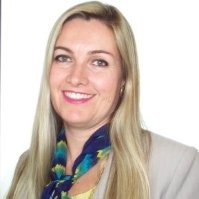
Title: High intensity non-ablative lasers in sleep apnea
Invited Talk
Prof. Denise M Zezell
IPEN/CNEN, Brazil
Abstract
Primary snoring and severe apnea are considered opposite stages of the same complex and evolutionary disease – obstructive sleep apnea (OSA), which affects a billion people worldwide. After determining the best irradiation conditions, this study aims to evaluate the treatment of snoring disorder with sequential high intensity non-ablative irradiation with two pulsed lasers: Nd:YAG and Er:YAG. Early identification and correct management can reduce cardiovascular risk, emergence of chronic diseases and use of medications. Noise occurs as a result of soft tissue vibration, causing partial collapse of the upper airway (UA) during sleep. A dysregulation of palatopharyngeal muscle tone appears to play an important role in this disorder. A longitudinal, interventional, and prospective study is underway with approval from the research ethics committee. So far, 8 volunteers (out of 45) who transition from primary snoring to moderate obstructive sleep apnea have been treated in three sessions of non-ablative laser irradiation, Nd:YAG, followed by Er:YAG (Lightwalker, Fotona). The time interval between appointments is 14 days. The oropharyngeal space for airflow passage was clinically analyzed volumetrically by photographic record, applying the modified Mallampati index, regarding the baseline record. Body mass index, neck circumference, minimum oxygen saturation, objective aspects of snoring severity and sleep quality of the patients treated will also be evaluated. The main clinical result obtained is the expansion of the upper airway lumen with a reduction in tissue extension and, with this, reduction or elimination of snoring.
Biography
Denise Zezell is PhD in Physics from University of Campinas(Brazil) and post-doc in Medical Physics from ICTP-Triste(Italia). She is Professor of Biophotonics at Nuclear and Energy Research Institute since 1992. Presently she is member of Photonics Commission, Ministry of Science, Technology and Innovation (MCTI- Brazil). Her main research activities are in the development of new diagnostic and therapeutic methods in Medicine and Dentistry, area in which she has published more than 190 papers. Lasers in Dentistry, spectral histopathology for tumor diagnosis and staging using imaging micro-Fourier Transform Infrared Spectroscopy, Infrared Thermography, and Optical Coherence Tomography are the main techniques used.

Title: New formalisms for the Optical equivalence theorem and applications
Invited Talk
Prof. Orchidea Maria Lecian
Sapienza University of Rome, Italy
Abstract
The optical equivalent for operators , with weighted density matrix and the spectral component f on compact support is defined in the projector operator. The definition of the first-approximation correction orders is demonstrated to depend on the definition of the parameters qualifying the definitions of the weighting-support-control function. The investigation is apt for systems constituted of intense, non-monochromatic laser fields. The power spectrum of the operators is this way decomposed as a sequence obtained after the majorization of the operators after those of the weighting function. The power spectrum is therefore not needed to be expressed as a sequence (of majorizations), where such majorization do not apply to pure states.The control of the spectral analysis is proposed, to distinguish among the several contributions.Calculations are performed for the most extreme case of the long-time limit of the error estimations. Applications are proposed for cold dynamics ensembles, cold atomic trapped ions, temperature experiments for protein folding in molecular dynamics; jump processes between states; quantums epration of multispatial Gauss-Markoffmodels; uncertainty estimations in metrology, decoherence and dissipation, noisy metrology beyond the standard quantum limit.
Biography
Prof. Orchidea Maria Lecian graduated at Sapienza University of Rome ans ICRA- International Center for Relativistic Astrophysics in 2005 ad completed her International Relativistic Astrophysics Phd at Sapienza University and ICRA. She was post-doctoral Fellow at IHES (Bures-sur-Yvette, France), AEI-MPI (Potsdam-Golm, Germany) and Sapienza University of Rome. She has teken part in intensive research prgorammes at AEI-MPI (Potsdam-Golm, Germany) and The Fields Institute for Research in Mathematical Sciences (Toronto, Canada). She has been researcher for SAIA- NS'P (The National Scholarship Programme of the Slovak Republic- National Stipendium Program) as Research grantee and Erasmus Lecturer at Comenius Univeristy in Bratislava, Faculty of Mathematics, Physics and Informatics, Department of Theoretical Physics and Physics Education- KTFDF She has been Assistant Professor at Sapienza University of Rome and is Porfessor at Sapienza University of Rome. She has contritbuted in national conferences and international conferences. She is author of research papers, conferece papers, review papers and one book. She is reviewer and editorial-board member for several reputed Journals.
“ Will be updated soon...”
+91 9491 456 452
Door No.200, Immidhihalli Main Road, Whitefield-560066, Bangalore, India
About Us
Global Scientific Guild organizes conferences and webinars to promote quality research and real world impact in an atmosphere of true international co-operation between scientists, doctors, professors, practitioners, engineers and industry by bringing together the world class renowned personalities to discuss the latest developments and innovations at one common platform.